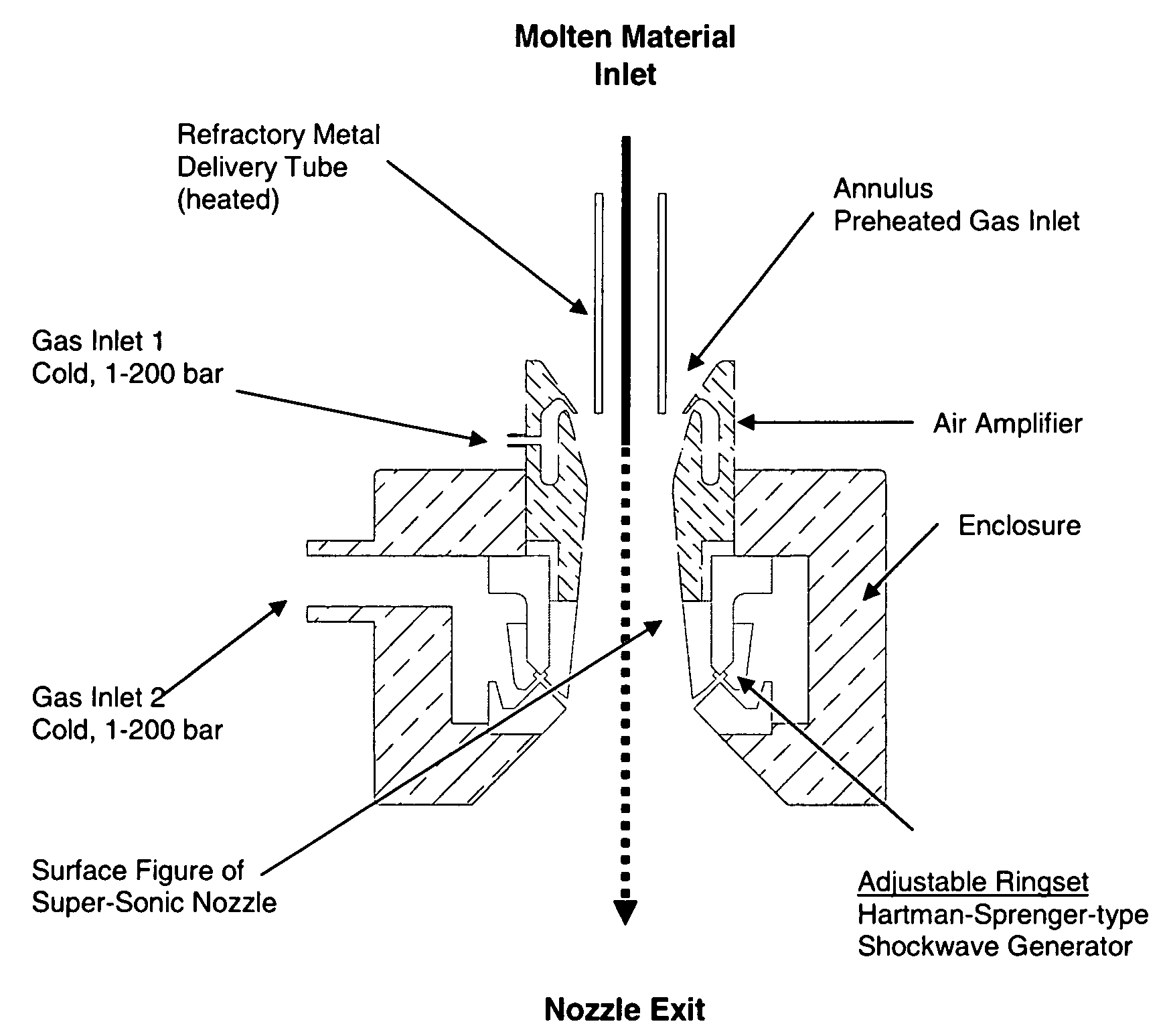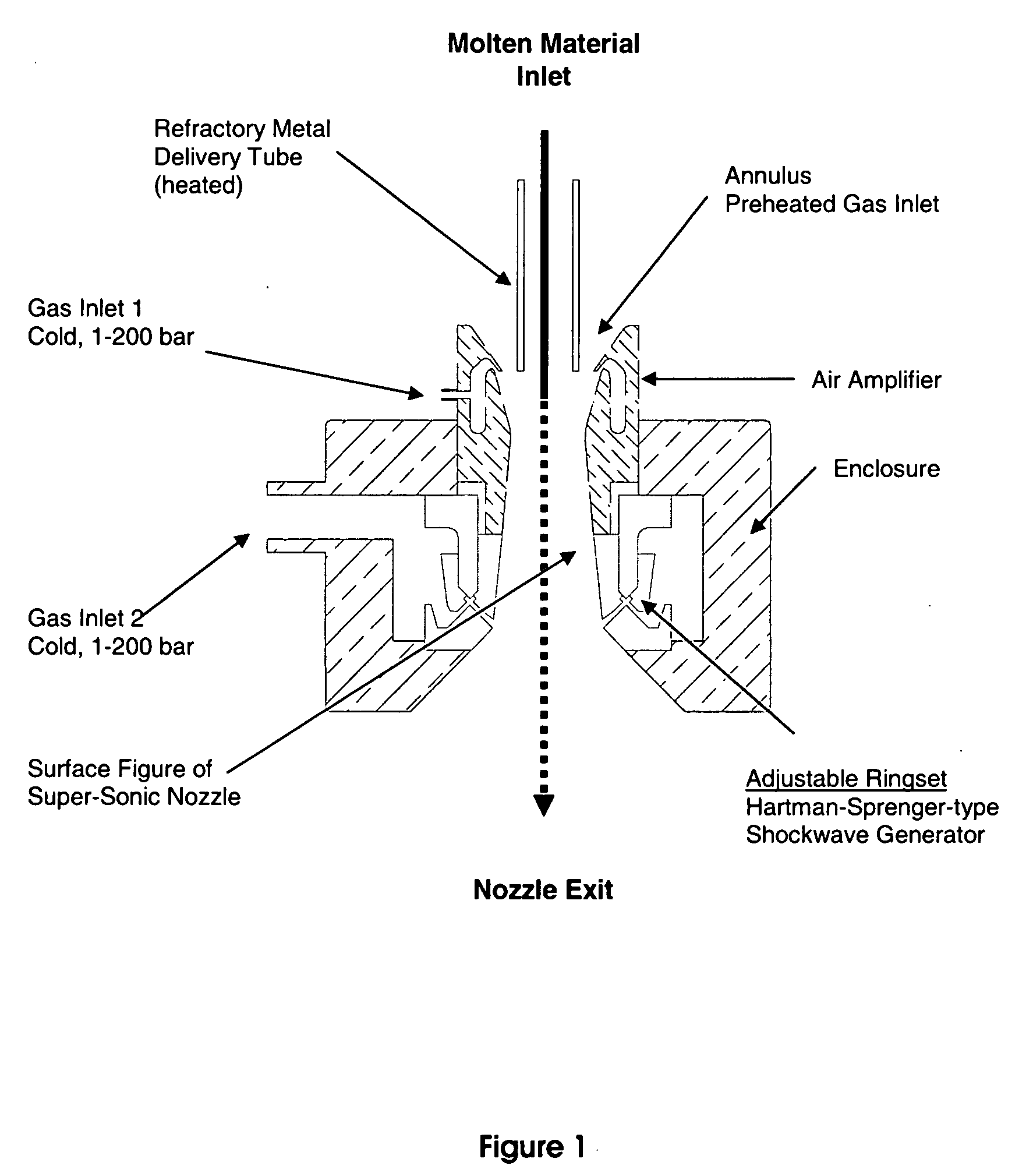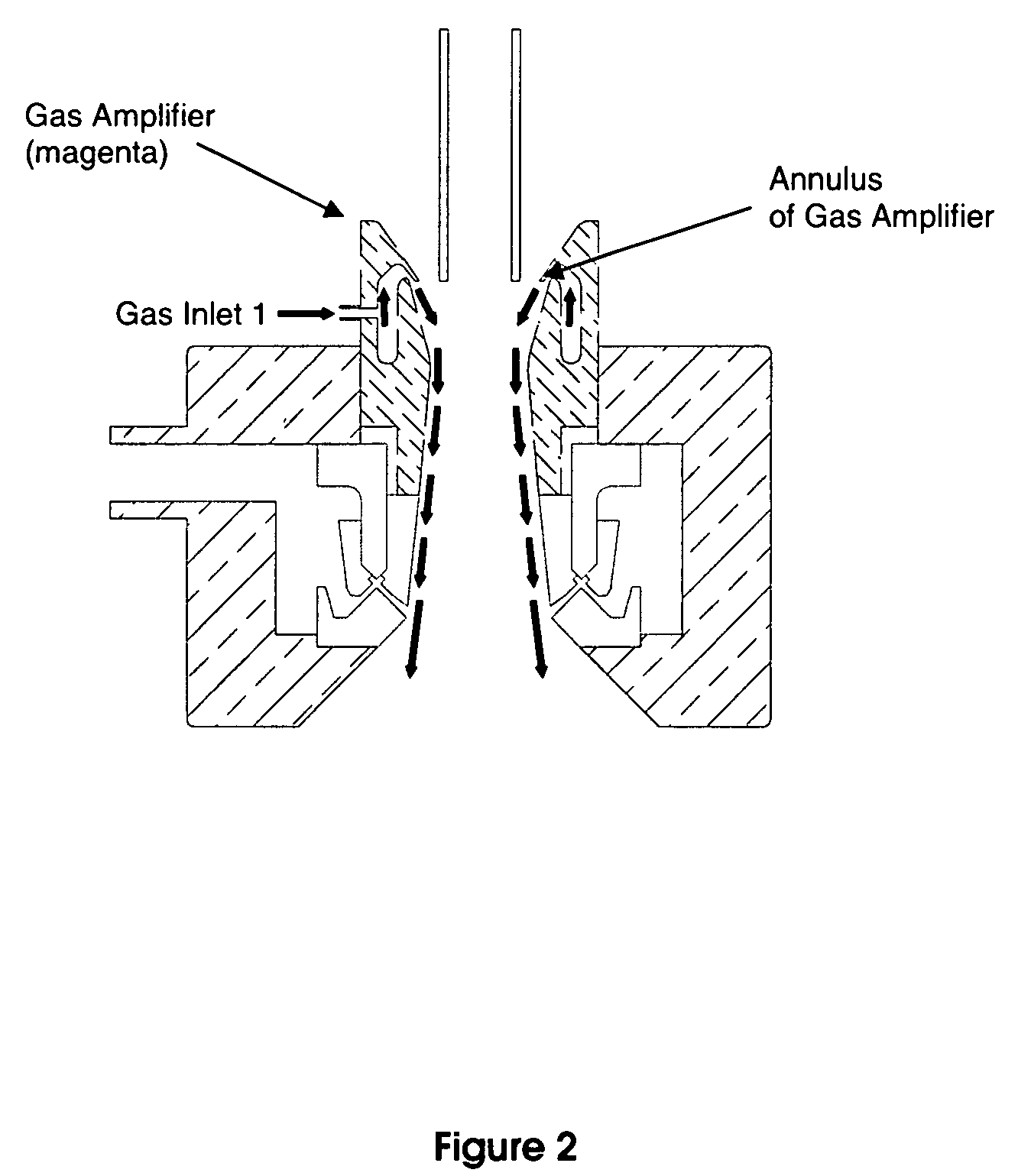Method for spray-forming melts of glass and glass-ceramic compositions
a technology of glass and glassceramic compositions, applied in glass reforming apparatus, glass making apparatus, manufacturing tools, etc., can solve the problems of complex arrangements of processes and systems
- Summary
- Abstract
- Description
- Claims
- Application Information
AI Technical Summary
Benefits of technology
Problems solved by technology
Method used
Image
Examples
example 1
Spraytest of Laser Glass LG-810
[0044]The laserglass LG-810 cullet was melted at a temperature of 1000° C. in a gas-heated 100 ml-crucible made out of high-temperature steel, and supplied to the spray-forming apparatus through a stainless-steel pipe with 5 mm diameter. Compressed air provided by a diesel compressor (AirMan 185CFM) at a sustained pressure of 8 bar and a peak flow rate of 180 SCFM was supplied to Gas Inlet 1 and Gas Inlet 2. The composition of the Nd-doped fluorophosphate laser glass LG-810 developed for high-energy laser applications at 1060 nm is as follows (see: Lee Cook and Karl-Heinz Mader, “Ultraviolet Transmission Characteristics of a Fluorophosphate Laser Glass”, Journal of The American Ceramic Society, Vol. 65, No. 5, December 1982):
CompoundWeight %P2O59.69AlF333.17NaF5.43KF3.62MgF25.83CaF230.45SrF28.82LaF32.00NdF32.00
After establishing flow, the spray-forming of the molten material was completed in less than 5 seconds. The resultant product was a mixture of ...
example 2
Spraytest of a Borosilicate Glass
[0045]The borosilicate glass was molten from cullet at a temperature of 1550° C. in an inductively heated 100 ml-crucible made out of a platinum-iridium alloy, and supplied to the spray-forming apparatus through a platinum-iridium alloy pipe with 5 mm diameter. Compressed air provided by a diesel compressor (AirMan 185 CFM) at a peak pressure of 8 bar and a peak flow rate of 180 SCFM was supplied to Gas Inlet 1 and Gas Inlet 2. The composition of the borosilicate glass was as follows:
OxideWeight %Na2O6.70B2O328.95SiO264.35
After establishing flow, the spray-forming of the molten material was completed in less than 5 seconds. The resultant product was a mixture of fibers and spherical particles. See FIG. 8. Due to the limited amount of glass supplied no attempt was made to separate the fiber generated during startup from the particulate produced towards the end of the run. The particulate obtained was characterized using optical microscopy, and consist...
PUM
| Property | Measurement | Unit |
|---|---|---|
| Temperature | aaaaa | aaaaa |
| Temperature | aaaaa | aaaaa |
| Temperature | aaaaa | aaaaa |
Abstract
Description
Claims
Application Information
 Login to View More
Login to View More - R&D
- Intellectual Property
- Life Sciences
- Materials
- Tech Scout
- Unparalleled Data Quality
- Higher Quality Content
- 60% Fewer Hallucinations
Browse by: Latest US Patents, China's latest patents, Technical Efficacy Thesaurus, Application Domain, Technology Topic, Popular Technical Reports.
© 2025 PatSnap. All rights reserved.Legal|Privacy policy|Modern Slavery Act Transparency Statement|Sitemap|About US| Contact US: help@patsnap.com



